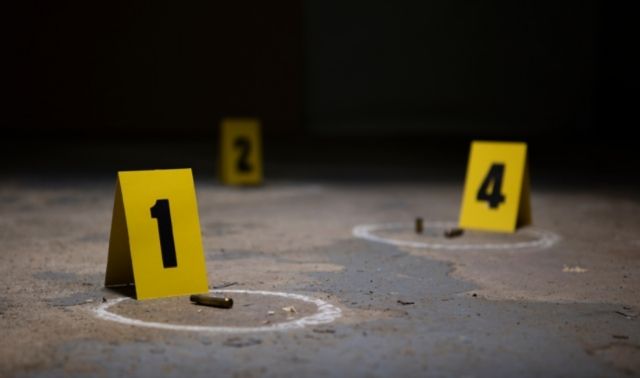Sign up for the Family Tree Newsletter Plus, you’ll receive our 10 Essential Genealogy Research Forms PDF as a special thank you!
Get Your Free Genealogy Forms
"*" indicates required fields

“You should always cite your sources. You should never accept a hint without checking it first. You should do this, you should do that, etc.”
The farther you get in genealogy, the more rules it seems like there are to follow! The longer you research, the more you hear about the “right” and “wrong” way to do things. Before long, it might feel like the “genealogy police” are at your door.
In reality, most people do genealogy as a hobby and hobbyists aren’t held to strict research standards like the professionals are. However, genealogy isn’t done in a vacuum. Your actions can affect others’ research, so it’s important to follow certain codes of conduct. But for the casual researcher, how do you decide what’s okay and what’s not?
ADVERTISEMENT
Here are a few genealogy “crimes” that you should be able to get away with. Plus, a few crimes where we’ll let you off with a warning—this time!
Crimes to Forgive Yourself For
Not Having a Research Plan
Let’s say you’ve been casually doing genealogy research for a while and you decide to take a beginner class. All of a sudden you start hearing about the necessity of creating a research plan. Yipes! You haven’t been using a plan at all, you’ve just been following where your research leads.
Relax. Research plans are helpful and they can help make you a more effective, organized researcher. But they are absolutely not required and it doesn’t mean all the research you’ve done up until this point is bad.
ADVERTISEMENT
The same goes for research logs. We here at Family Tree strongly recommend both research plans and logs, but you’re not in trouble for not using them.
Believing Common Myths
There are a few classic family history myths that are very common. Take for example the tens of thousands of Americans who believe they have a “Cherokee princess” somewhere in the family tree.
If you’re guilty of believing or spreading these myths don’t beat yourself up. The majority of people repeat family legends without taking the time to verify if they’re true.
So, forgive yourself and take some time to fact-check that family story. And try not to be too disappointed if you find out the story isn’t true. Your real family history is valuable and interesting, because it’s the truth!
Only Doing Direct Line Research
Direct line research means researching your direct ancestors backwards through time (parents, then grandparents, then great-grandparents, etc.)
Spend long enough in the genealogy world and eventually you’ll start hearing that you should research your ancestor’s FAN club (friends, associates, neighbors), otherwise known as cluster research, or that you should be researching collateral relatives (siblings, in-laws, children, etc.)
All of these are good strategies but there’s nothing wrong with sticking to direct line research, especially when you’re just starting out. Methods like cluster and collateral research will come in handy down the line when you’re filling out full family trees or trying to bust through brick walls.
Being Unorganized
There’s not a genealogist in the world who isn’t guilty of being a disorganized mess at one point or another! We all have piles of papers to file, notes we can’t find and boxes of documents and photos that need to be digitized. Yes, it is good to be organized so you don’t lose things or have to repeat your research. But as far as genealogy crimes go, let yourself off easy for this one!
Building Your Tree from DNA Matches
You are guilty of this crime if you’ve added DNA matches as relatives to your tree without doing the proper research. Often the crime scene in this scenario is Ancestry’s ThruLines, which is a tool that finds people in your tree who are also in your matches’ linked trees.
The usual suspects in this crime are genealogy beginners who have taken a DNA test and don’t understand the difference between their genetic and their genealogical family trees.
Your genetic family tree contains people with whom you share a genetic relationship, measured in centimorgans (cM). However, you can have multiple different genealogical relationships with the same DNA match. For example, if you share 30 cM with a match, that person could be a fourth cousin, half-second cousin twice removed, or many more different kinds of relative.
By all means, use shared cMs and tools like ThruLines to estimate your relationships to your matches. Just remember that you can only prove your genealogical relationship through the proper research.

Crimes to Leave in the Past
Not only do these bad habits put your own research at risk, they could also negatively affect others. Be a good genealogy citizen and leave these “crimes” in the past.
Copying From Others’ Trees
We’ve all been guilty of this one at one point or another! The crime is following hints (usually on Ancestry) and copying from others’ trees without verifying the information. It’s easy and very tempting to do, but it really should be avoided. No one independently verifies information in online trees and there’s no guarantee that the other person’s tree is accurate. If a tree has thousands of ancestors and the only source mentioned is other Ancestry trees, that’s a field full of red flags.
There is a small exception to this one. Let’s say you want to throw together a “quick and dirty” tree to try and figure out how you’re related to a DNA match. Then and only then we say go ahead and follow those hints. Just don’t forget that to actually prove the relationship, you’ll need to follow up with proper research.
Improperly Storing Documents
You are guilty of this crime if you have important items stored in a risky place (usually a box on the floor of the garage or basement). Again, this is a very common crime that usually doesn’t have consequences but consider this: if anything were to happen (fire, water damage, bugs, etc.) those items are lost forever.
To get bailed out for this crime, you don’t have to scan and store everything perfectly right away. Just move the items to a safer place so they’re out of harm’s way. Off the floor in an interior, climate-controlled room is a good place to start!
Not Citing Sources
Source citations are tedious and boring, but they are an important part of solid genealogy research. Source citations give your research credibility and they leave a trail of breadcrumbs so that others can find the source in the future. You don’t need to have a full bibliography for every source you use, but you should at least note the who, what, when and where of each source. Use a source citation template to make it easy to fill in the information.
Not Educating Yourself
This is the crime of never taking the time to educate yourself on how to become a better researcher. You don’t have to go out and get a bachelor’s degree in genealogy, nor do you need to bring your research to a halt. By all means, keep the search going. Just resolve to take some time to educate yourself about common mistakes, best practices and research methods that may help you. Browsing our collection of articles on genealogy fundamentals is a good place to start. Remember, you can’t benefit from what you don’t know!
Last updated, April 2024
ADVERTISEMENT






